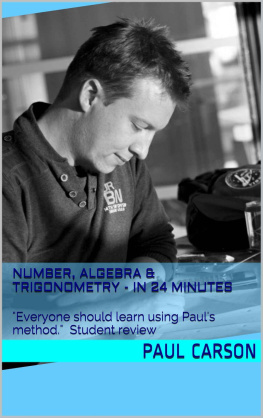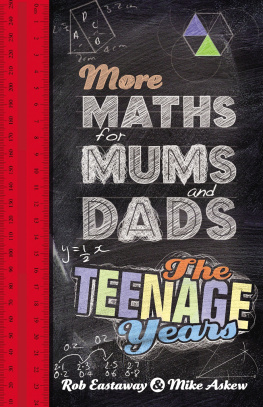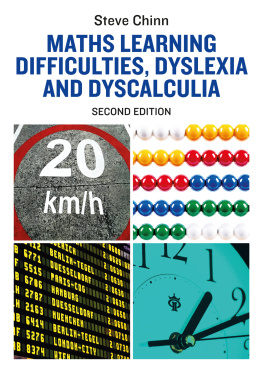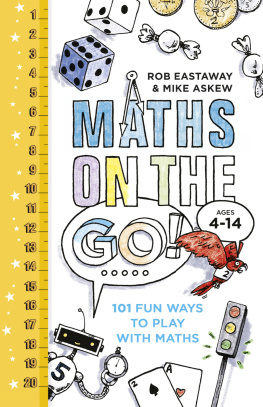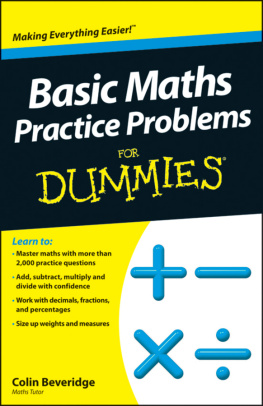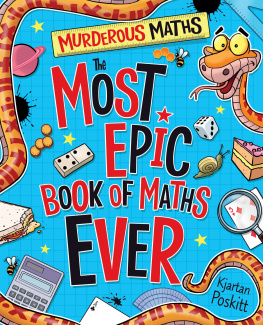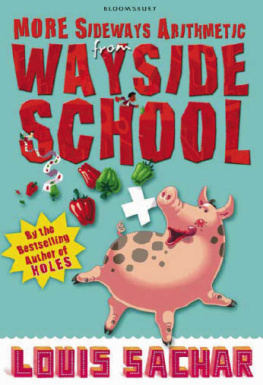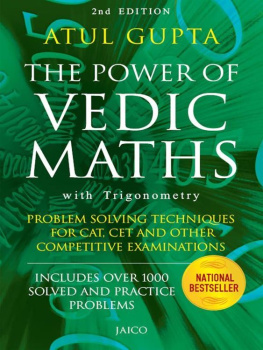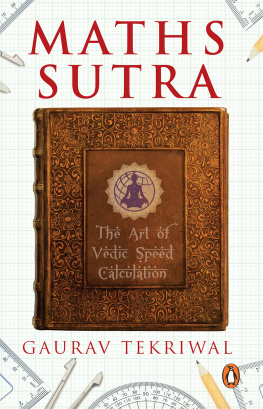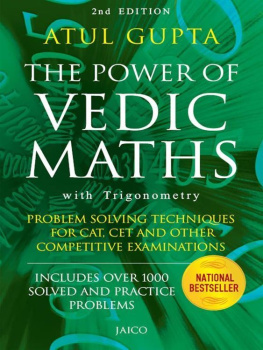Contents
Name/Copyright Math-Hacker Paul Carson 2015 Dedication To Tymoteusz, I hope the world you grow up in teaches maths easily. Blog http://mathsinaminute.blogspot.com Website http://www.paulcarsonmaths.co.uk Twitter @In_A_Min Email YouTube Channel Containing Instructional Videos http://www.youtube.com/user/InAMinMaths
Series Contents Series of books and titles Naked Numbers: The 3 Rules To Make Your Life Add Up , Hodder Education, the Michel Thomas Method (2010) Maths in a Minute Series Contents and numbering 2nd September 2013
- Multiplication
- Division
- Fractions
- Decimals
- Percentages
- Negative Numbers
- Squaring & Area
- Cubing & Volume
- Indices
- Standard Form
- Logarithms
- Sequences
- Gradient/Equation of A Straight Line
- Simultaneous Equations
- Quadratics
- Inequalities
- Changing the Subject
- Cubics
- Algebraic Fractions
- Algebra of Arithmetic
- Angles and Radians
- Gradient/Tangent
- Sine and Cosine
- Sine and Cosine Rules
- Pythagoras Theorem
- Gradient/Differentiation 1
- Integration 1
- Polynomials
- Types of Functions
- Co-ordinate Geometry
- Differentiation 2
- Integration 2
- Binomial Theorem
- Trigonometry
- Numerical Methods
- Differential Equations
- Mechanics
- Vectors
- Engineering Fundamentals
- Coding Fundamentals
- Statistics
- Matrices
- The Slide Rule
- Richard Feynman
- The Current Mathematics Teaching System
- How the MinAMin Method Works
- Complex Numbers
- Partial Differentiation
- Series
- Integration 3
- Multiple Integrals
- Differential Equations
- Fourier Series
- Partial Differential Equations
- Vector Calculus
Proverb Nil Satis Nisi Optimum (
Nothing but the best is good enough - Everton FC proverb)
How To Best Use This Book How To Best Use This Book This book should be read in chapter order. Start at the beginning and work through to the end! At the end of some chapters there is a typical exam question for you to try. Make sure you do it. Then practice questions like these as much as you can. Alongside the book there is a YouTube channel which demonstrates many of the techniques.
SUBSCRIBE And you can see the techniques carried out in real time, as described by the book. Finally, at the end is a guide to the tricky thing of taking an exam itself! Read, understand, work through and master the skills. An A* will become incredibly easy to you and youll be amazed at how easy it can be! Introduction to Multiplication Introduction The idea of optimised mathematics. This book is the culmination of years of research, experience, student feedback, a tireless search for better methods and a desire to make maths easy. This has taken fifteen years. In that time, my students have a 95% success rate, a greater understanding of maths, no misery or pain because maths is boring, their self-respect and pride has returned and of course, they see the world in a new, mathematical way.
They also realise that learning doesnt have to be painful and it is possible to learn something that may appear to be difficult with ease and in relatively little time. The method I have created is one that is holistic, containing as few methods as possible, subliminal, so that you learn advanced maths as you are doing the fundamentals, algebraic, meaning you think along abstract lines without initially realising, and joyful, because you can do things you hitherto thought impossible. While reading this book, one question will constantly return to your mind. WHY DONT THEY TEACH THIS AT SCHOOL? Ive been asked this many, many times, and there are a variety of answers. For now, for you, you have in your hand the guide and passport to unlocking the secrets of maths and becoming one of its better users. You will be able to do things that will impress your friends, family, teachers and most of all yourself.
Take it on, be inspired, use the method for you and be a success! The first chapter is all about multiplication. Good luck. Have fun. >>> >>> Chapter 1 There are loads of multiplication techniques out there. Egyptian Babylonian Chinese Russian Napiers bones Grid method Long multiplication The list goes on. You could try each of these yourself and decide which is best.
What I want you to do is optimise. I want you to do multiplication in the most efficient, intuitive and mathematically advantageous way. A method that allows you to do five other things. And a half. But Ill get to that. School teaches all sorts of ways with the hope that one will snag and youll be able to do it.
The most popular is the grid method. Before we discuss these Why school techniques dont work Some of their methods work. Of course they do. But why do people struggle so? Because the methods require memorisation of a number of steps, which, if any are wrong, makes the answer incorrect. Worse, it is not possible to know yourself if it is incorrect. You have to ask someone else.
What kind of system is that? Students find themselves asking: Is this right, Miss? Plus, because youre memorising steps, you dont really understand what is happening. And this leads to uncertainty. This means that youre being trained to act like a robot. And robots dont think for themselves. So how would you know if it was right or wrong? Only if your controller tells you so! It is vital, really vital, that we know why we are doing things. This makes it easy to remember, more interesting to learn, and allows creativity of thought.
And even improvements of existing systems. I shall use an analogy to illustrate. Do you have to remind yourself not to put your hand on a hot stove? No? Why not? Because you understand the consequences if you were to do so. You dont have to memorise a rule Never touch a hot stove and not understand why. You already understand why. And so it is easy to remember and impossible to forget! Recently, my curious cat decided to walk on my kitchen tops and over the cooker.
Unfortunately the stove plate was still hot as I had just used it. There would have been no point teaching him about this beforehand. But now he will never forget. I learnt maths in the same way...via painful failure! So you can avoid my mistakes from reading this course. Understanding why something is makes it easy to remember and impossible to forget. That is how anything should be learned.
And it works especially well with maths. Lets start. So in a book about multiplication, the first question has to be. What is multiplication? Before I just give you the answer, I want you to think about it a little bit. Like youve probably thought about the consequences of putting your hand on a hot stove, what you know, you wont forget. And if you come up with it yourself, youll definitely remember it! So, to make it a little more challenging and point you in the right direction as well, think for a moment, what is multiplication? But in your answer, you cannot, CANNOT, use the words Multiply Times Product By Think about it.
Think about it. A bit more. What have you got? Multiplication is.. Now in 13 years of tutoring, I have heard some varied answers. And Im not going to embarrass my students by referring to them here. The overriding result, although not for everyone, isactually, I dont know.
Isnt that something? 10 years in education (or more) and they dont know. Is that their fault, or schools? In my opinion it is schools. When I show you how easy this can be, you will be amazed that school can make it so hard. What Multiplication Is Chapter 1 What multiplication is So, what did you come up with? Heres the answer: Multiplication is just..repeated addition. Thats it. (Is that what you came up with? If not, dont worry.) Lets look at this.


